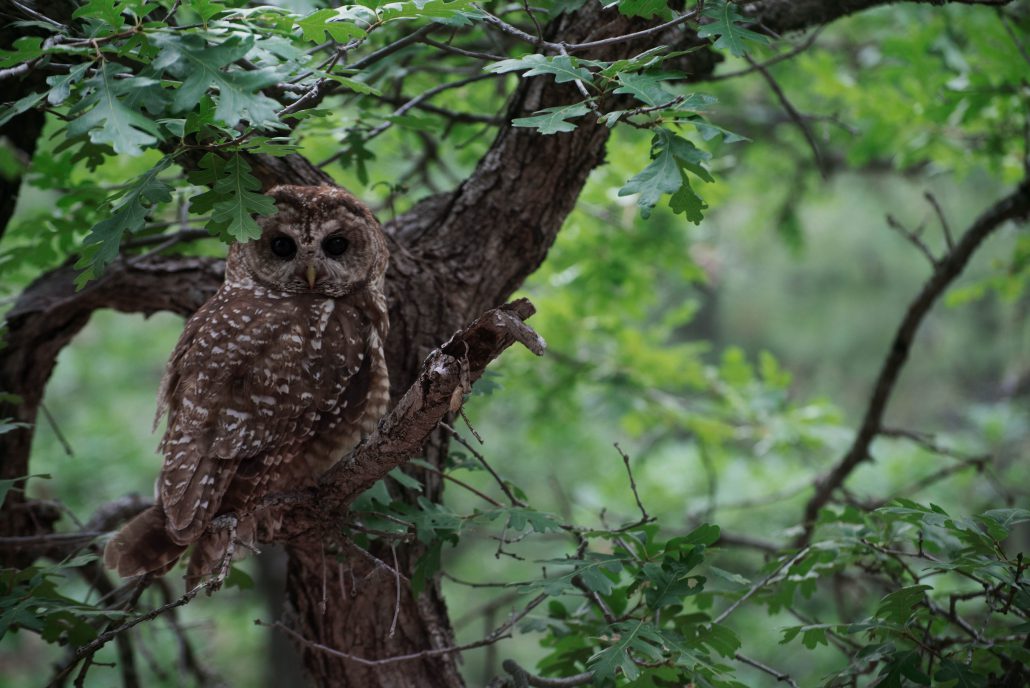
Mexican Spotted Owl. Photo by Danny Hofstadter (Bird Conservancy field technician).
By Jennifer Blakesley and Wendy Lanier
The Mexican Spotted Owl (Strix occidentalis lucida) is one of three subspecies of Spotted Owl. Habitat loss from timber-management practices and stand-replacing wildland fires have caused declines in the Mexican Spotted Owl population. Consequently, it was listed as Threatened under the Endangered Species Act in 1993. As with many threatened or endangered species, its population must be monitored to determine success in the recovery of the species.
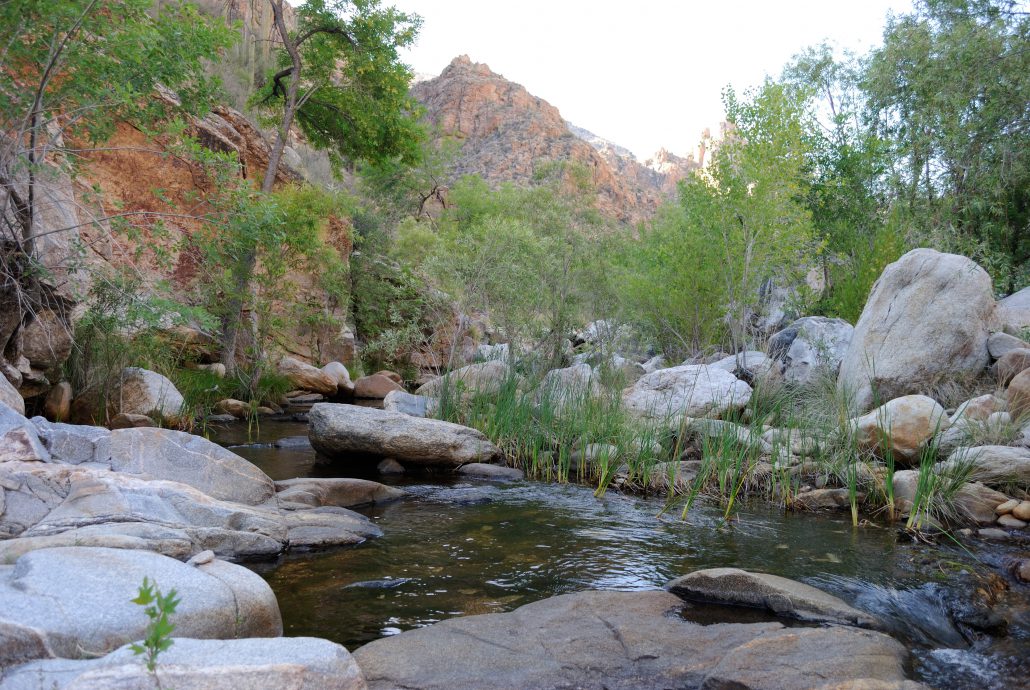
Along the trail to a survey site on the Coronado National Forest.
Photo by Wendy Lanier.
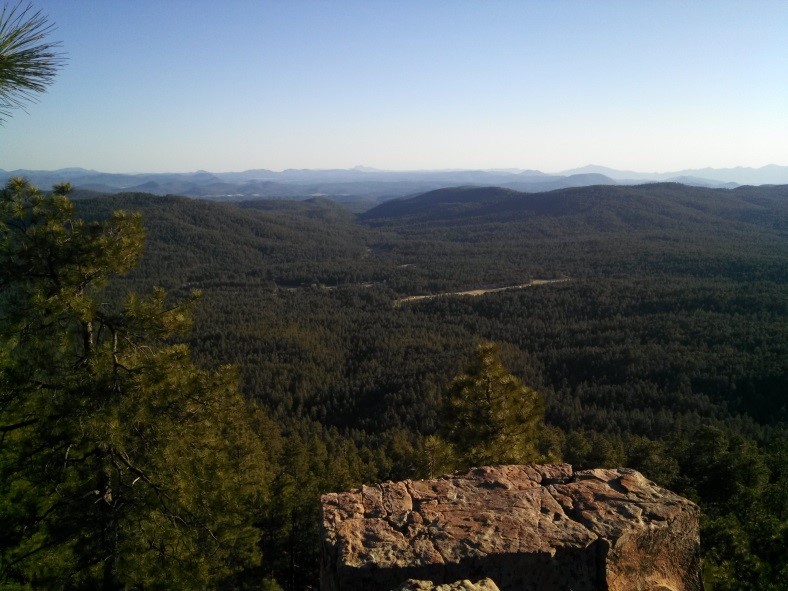
Gila National Forest survey site. Photo by Jennifer Blakesley.
Bird Conservancy partners with the Southwest Region of U.S. Forest Service to monitor the Mexican Spotted Owl for the purpose of tracking changes in the number of sites occupied by the Owls over time. From April to July each year, our technicians spread out across 11 National Forests in Arizona and New Mexico to survey predetermined sites in forests and steep canyons, which are favored Spotted Owl habitats. Despite challenges in accessing survey sites due to rough terrain, poorly marked roads and trails and the necessity for off-trail navigation, we are rewarded with a remarkable variety of flora and fauna, sunsets and a good daily workout.
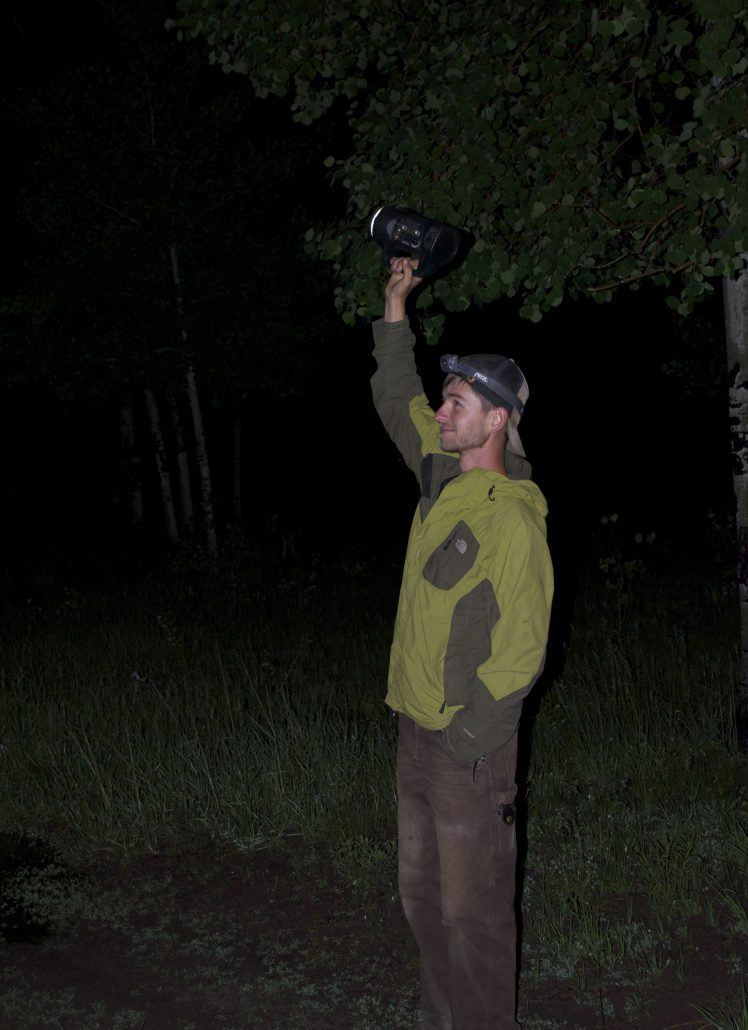
Bird Conservancy of the Rockies field technician broadcasting calls of Spotted Owls Photo by Wendy Lanier.
Beginning at dusk, we broadcast prerecorded Spotted Owl calls and listen for any owls calling in response to our recordings. Each survey location contains 5 sampling points; technicians must hike between points and back to their vehicles in the dark.
2016 marked the third year of this project. We successfully surveyed 200 sites across the two states (black dots on map below) and detected Mexican Spotted Owls in 111 of those sites. Our analysis showed an increase in occupancy over the three years, indicating a growing population. However, this ostensibly positive trend could be due to a few years of favorable weather, which promotes high adult survival and reproduction. The trend could easily change in years of poor weather. The data we collect will ultimately be used to determine if and when the subspecies no longer needs to be classified as a threatened. In addition, our work has the potential to inform on-the-ground management decisions to protect Mexican Spotted Owls and promote their population growth.
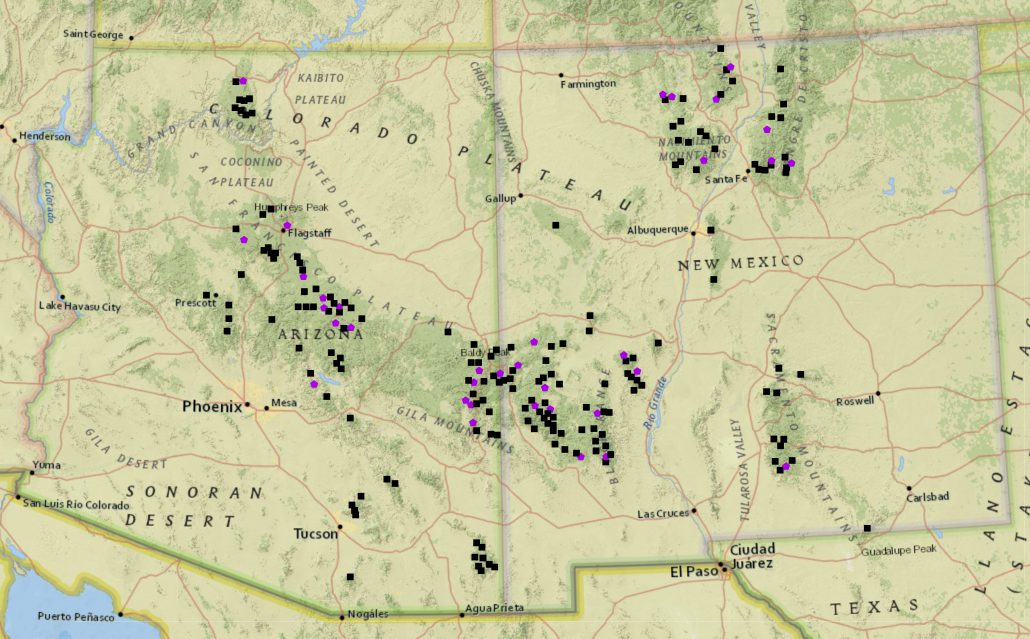
The distribution of 200 sampling units for the Mexican Spotted Owl occupancy monitoring project in Arizona and New Mexico. The spatially balanced, random sample of sites to be included in the acoustic monitoring program are marked by purple pentagons. Symbols are not to scale.

Song Meter SM4, Wildlife Acoustics
recording device.
In 2017 we will implement a rigorous pilot study to evaluate the effectiveness of using acoustic recorders (Song Meter SM4, Wildlife Acoustics) to monitor Mexican Spotted Owl site occupancy and to compare occupancy rates estimated using data from broadcast surveys and acoustic recordings. Field work will be concurrent with the broadcast surveys, conducted in April through early July, 2017. Technicians will deploy the recorders at survey sites and leave them to record for eight hours each night for 1-2 weeks.
Calls of Spotted Owls can be recognized by listening to the recordings or by visual inspection of sonograms generated from the recordings:
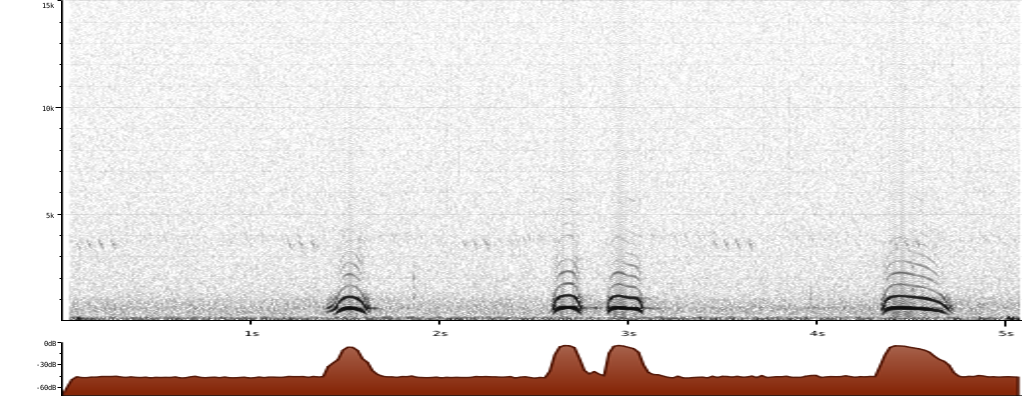
Recording and sonogram of a male Mexican Spotted Owl by Tim Marquardt, www.Xeno-Canto.org (XC178278)
The sites selected for surveying using the acoustic recorders will be a spatially balanced random subset of the sites we are already surveying with broadcast surveys. Potential benefits to using recorders include: (1) Field work (deployment and retrieval of equipment) can be more safely conducted during daylight hours; (2) Data can be collected for several weeks rather than a single night at a time.
Thank you to the U.S. Forest Service Region 3 for funding and collaborating on this project and to Forest and District Biologists throughout the Region for logistical support. In addition, this work would not have been possible without the dedication and hard work of the 2014, 2015, and 2016 Mexican Spotted Owl crew.
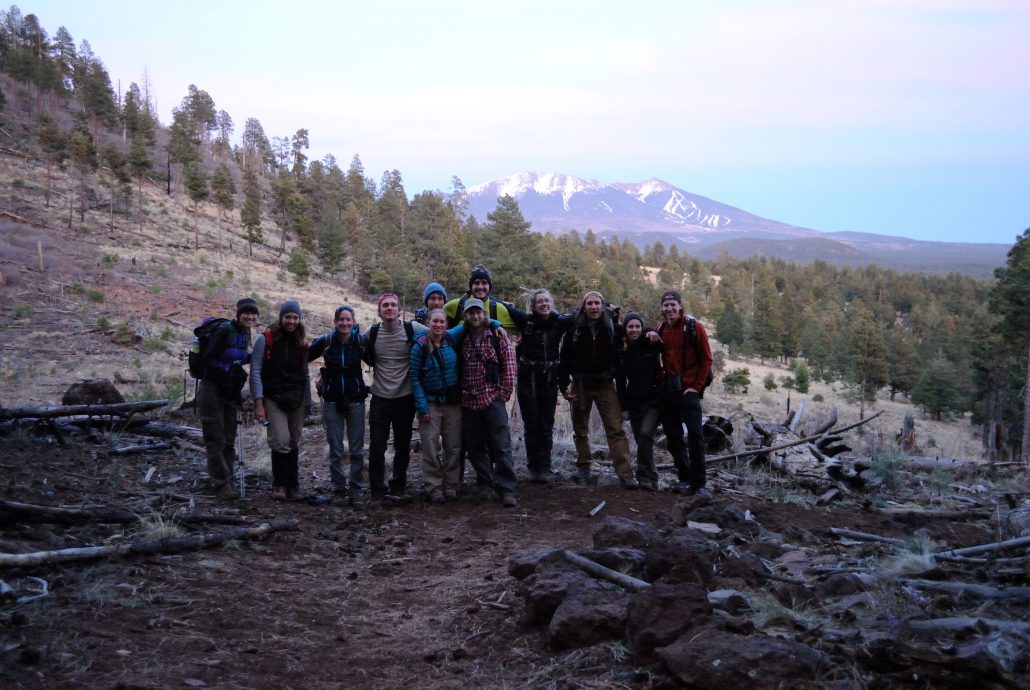
Bird Conservancy of the Rockies Spotted Owl field crew. Photo by Wendy Lanier.
Click here to download a full report: Site Occupancy by Mexican Spotted Owls (Strix occidentalis lucida) in the US Forest Service Southwestern Region, 2016
 If you would like to support the Mexican Spotted Owl monitoring program, please visit our special Colorado Gives campaign page! Every nonprofit receiving a donation on Colorado Gives Day receives a portion of the $1 Million Incentive Fund, which increases the value of every dollar donated! Thank you for your support!
If you would like to support the Mexican Spotted Owl monitoring program, please visit our special Colorado Gives campaign page! Every nonprofit receiving a donation on Colorado Gives Day receives a portion of the $1 Million Incentive Fund, which increases the value of every dollar donated! Thank you for your support!


